In this Article
“Normal is boring” is apt when it comes to food. Kids expect variety and find the usual food items to be boring. As your children are growing, you tend to get anxious about their food habits and more often end up pondering whether they are getting ample food, fed on time, and also, whether it’s nutritious or not. So, let’s explore about nutritious food for children.
What is a Food Pyramid?
Typically, children need healthy and balanced food to complement their growing bodies. Balanced food includes proportionate amounts of food belonging to certain specific, but basic food groups, such as vegetables, grains, and so on. To make things easier with respect to understanding balanced food, a food pyramid is used. It is a pyramid-shaped illustration that gives you a pictorial view of the various food items and their appropriate proportions that children must eat. In simple terms, it’s a food chart that gives you details about the required amount of fats, vitamins, and minerals, proteins and carbohydrates for your children.
The top-most portion is tapering and indicates food items that must be consumed in small quantities. The lower-most broad portion of the pyramid indicates food items that can be consumed in large quantities.
A typical food pyramid (top to bottom) consists of:
- Top tapering layer – Food and drinks high in fat, sugar, and salt
- Second layer – Fats and oils
- Third layer – Meat, poultry, fish, eggs, beans, and nuts
- Fourth layer – Milk, curds and other dairy products
- Fifth layer – Vegetables and fruits
- Sixth layer – Cereals and bread
Why is Food Pyramid Important for Kids?
Growing children require carbohydrates, vitamins, minerals, protein, fiber and fats. However, the amount of each of these important components varies depending on the age and gender. A food pyramid or chart provides general guidelines to help parents understand the need and components of a complete and balanced diet. Generally, a balanced diet, with adequate nutrients must include at least 3 to 5 food groups in every meal.
When in doubt, refer to a food pyramid, which acts as a guideline providing you complete details about the optimal quantities of food components that are required for the healthy growth of your child.
What are the Key Components of Food Pyramid?
The five basic food groups for kids that are part of the food pyramid are:
1. Grains
Children are involved in a lot of physical activities and so need carbohydrates as a source of energy. Grains, including bread and rotis, are a source of carbohydrates.
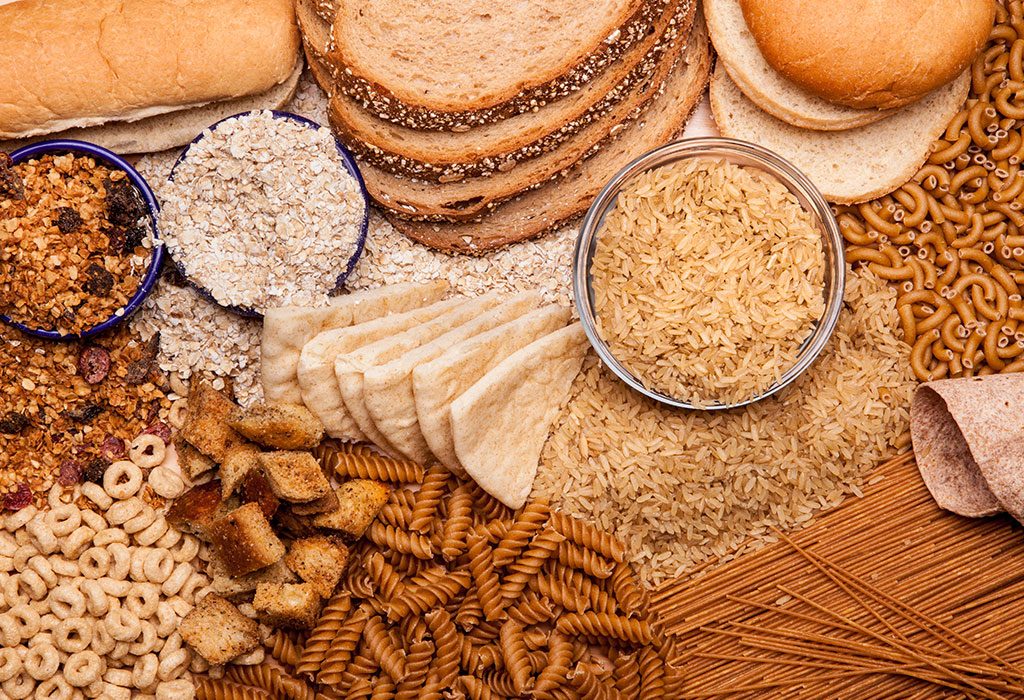
| Age Group | Daily Recommendation (in Ounces(oz)) | Food Sources |
| 2 to 3 years | 3-5oz | · Whole grain bread
· Roti · Potatoes · Whole wheat food items like chapattis and pasta · Rice · Cereals · Oatmeal · Corn · Barley |
| 4 to 8 years | 5-8 oz | |
| 9 to 13 years | Girls – 5-7 oz
Boys – 5-9 oz |
2. Vegetables
Children need minerals and vitamins. Vegetables are a good source of these nutrients. Green-leafy vegetables are rich in nutrients, and it is recommended to include 5 or more green and colored vegetables in the daily meals of children.
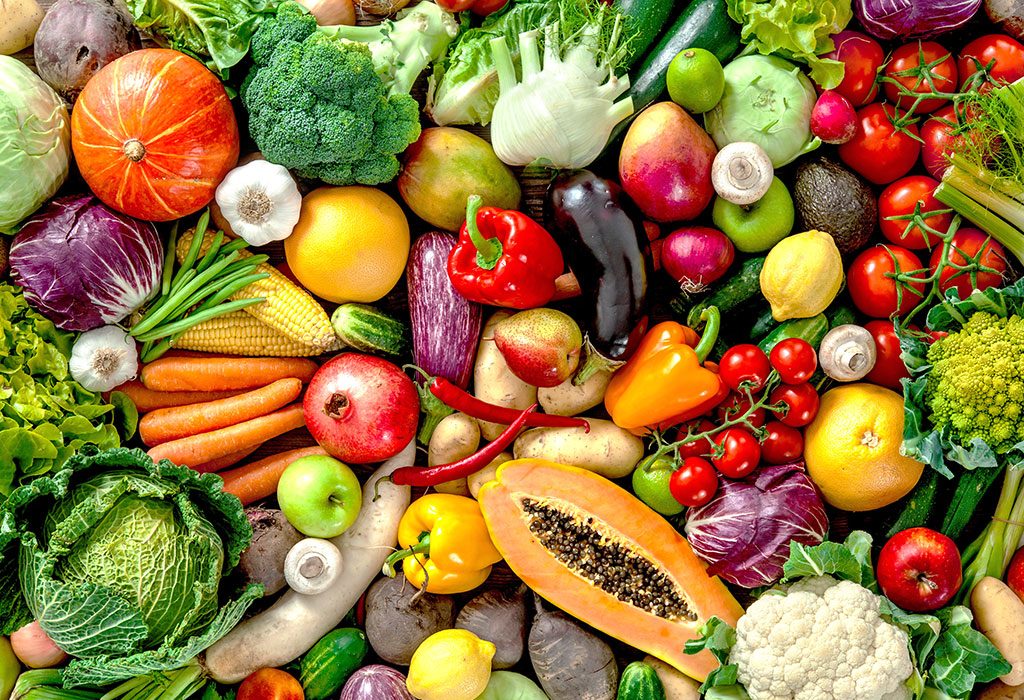
The following table provides a list of the recommended daily servings for children:
| Age Group | Daily Recommendation (in cups) | Food Sources |
| 2 to 3 years | 1 cup | Vegetables include raw or cooked ones. You can also give them as purees or smoothies. Some of the vegetables include:
· Carrots · Broccoli · Beetroots · Spinach · Tomatoes · Leafy greens such as Palak |
| 4 to 8 years | 1.5 cup | |
| 9 to 13 years | Girls – 2 cups
Boys – 2.5 cups |
3. Fruits
Fruits are a good source of vitamins and fiber content. Whole fruits are recommended when compared to fruit juices.
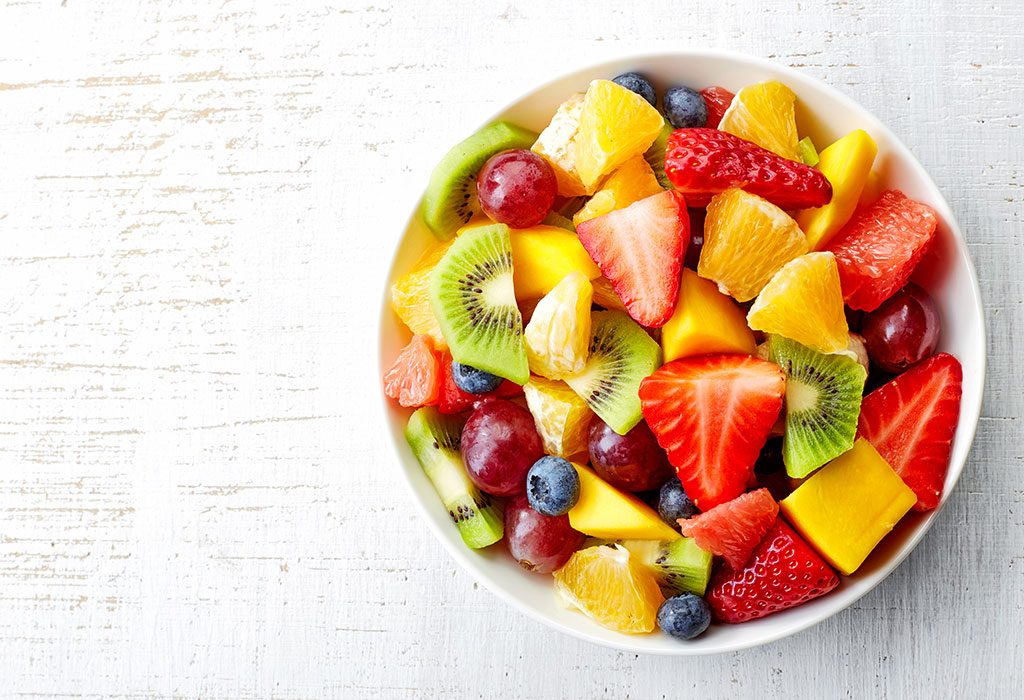
| Age Group | Daily Recommendation (in cups) | Food Sources |
| 2 to 3 years | 1-1.5 cup | Fruits include:
· Apple · Banana · Orange · Peach and many other fruits that your child prefers · Dried fruits |
| 4 to 8 years | 1-1.5 cups | |
| 9 to 13 years | 1.5-2 cups |
4. Milk/Dairy
Milk and dairy products provide the required amount of calcium, vitamins and proteins for your child. These nutrients help in bone growth and building strong teeth.
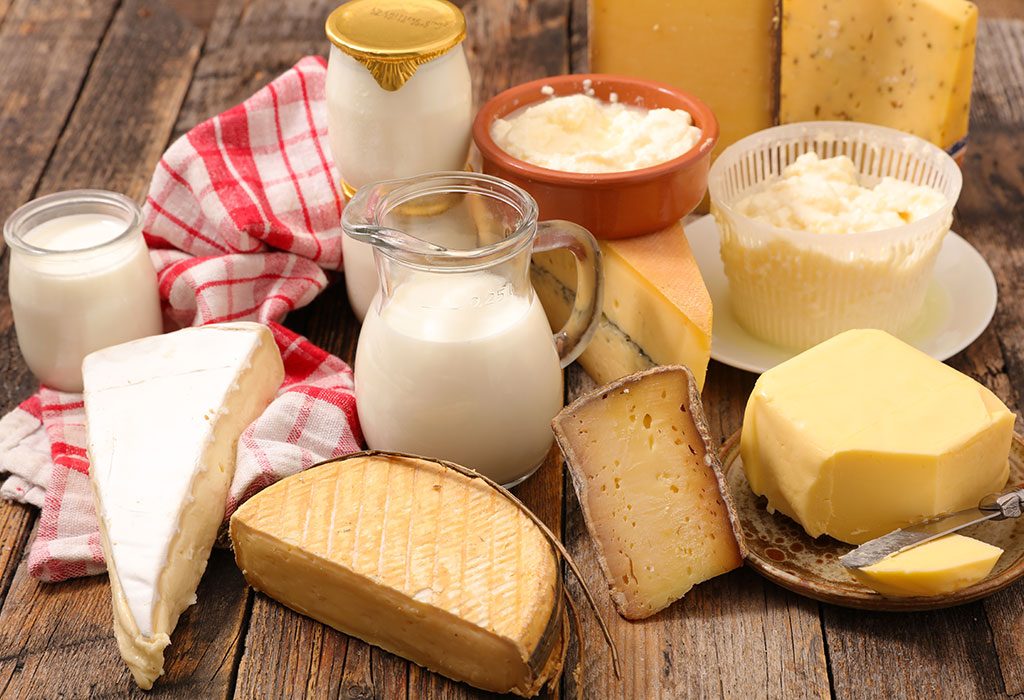
| Age Group | Daily Recommendation (in cups) | Food Sources |
| 2 to 3 years | 2 cups | · Milk
· Yogurt/ Curds · Paneer · Cheese · Buttermilk |
| 4 to 8 years | 2.5 cups | |
| 9 to 13 years | 3 cups |
5. Meat/Beans/Fish
Meat, beans, and fish are rich in proteins that are an essential component of child growth. They help in building and replacing the tissues in the child’s body.
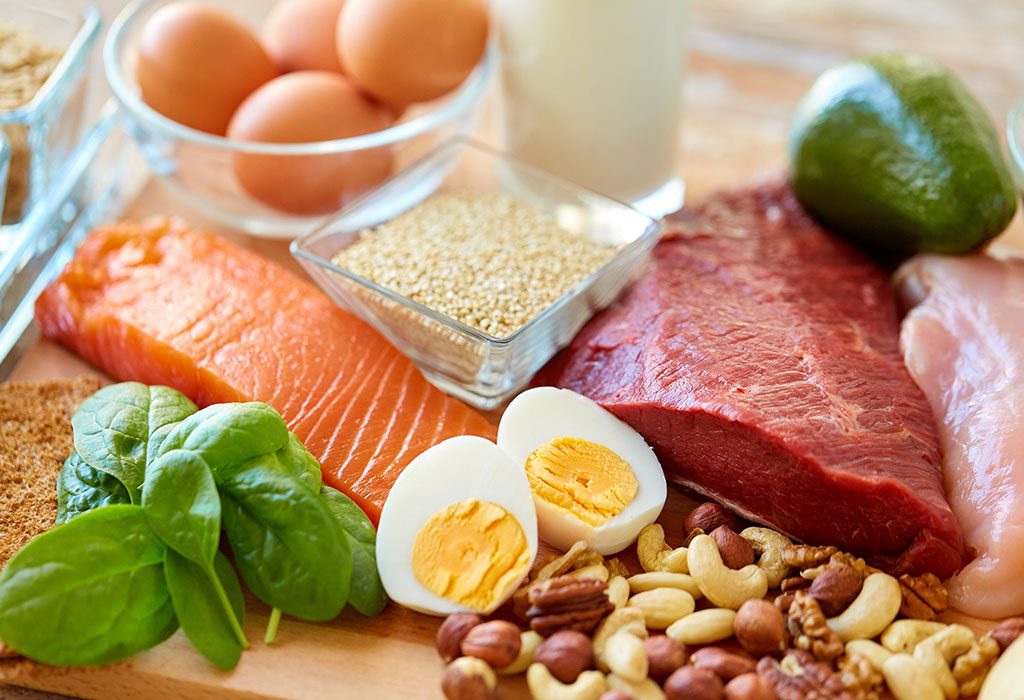
| Age Group | Daily Recommendation (in Ounces(oz)) | Food Sources |
| 2 to 3 years | 2 oz | · Meat
· Fish · Dry beans · Eggs · Nuts · Peanut butter · Seeds · Soya beans · Pulses · Black beans and green grams · Peas · Sprouts |
| 4 to 8 years | 4 oz | |
| 9 to 13 years | 5 oz |
Additionally, the food pyramid also includes fats and oils. Fats and oils might sound unhealthy. However, all fats do not come under the unhealthy category. Fats occupy a small portion of the food pyramid. Children require an adequate amount of fats and oils as they are still going through a developmental phase and are involved in a lot of physical activities that require energy. Our body requires fats and oils for the following reasons:
-
- To protect important organs
- To control body temperature
- To help skin cells, never and brain
Cod liver oil, olive, beans, sunflower seeds and peanuts are good sources of healthy fats. These sources provide monounsaturated and polyunsaturated fats that are good for your child’s health.
One of the most vital requirements that complement a healthy and balanced food is water. Ensure that your children drink plenty of water. Fluids play an important role in your child’s meal. So, include items like watermelon, coconut water, oranges and buttermilk as part of your child’s meal.
The following is the recommended water intake for kids:
- 5 to 8 years – 5 glasses (1 litre)
- 9 to12 years – 7 glasses (1.5 litres)
- 13+ years – 8 to 10 glasses (2 litres)
What is My Plate and How is it Different from Food Pyramid?
With the growing emphasis on good health, eating healthy food became a priority. Blending appropriate amount of varied food items can help you be healthier in the present and in future. Eating healthy food cannot be restricted to a couple of components. It is moulded by various factors such as your food preferences, stages of life, access to food items, culture, personal choices and decisions and traditions. So, a new model named MyPlate was created. It was started by the United States Department of Agriculture (USDA), which is an agency responsible for nutrition.
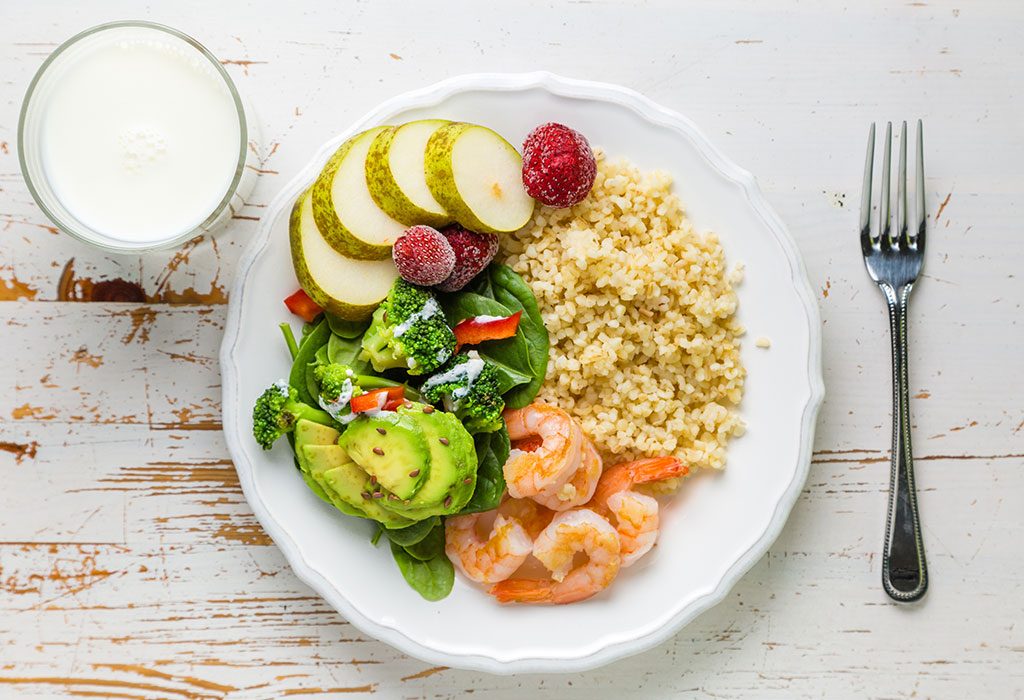
MyPlate is a colourful plate illustration that reminds people to eat a range of healthy foods and ensure that they eat less of some foods and more of other foods. The plate is divided into four parts and includes a separate section beside the plate, indicating a side order.
Following are the parts of the plate:
- Vegetables
- Fruits
- Grains
- Proteins
- And a side order of dairy products
Let us look at the differences between a food pyramid and MyPlate:
1. Proper Indication of Food Groups
The representation of food items in a pyramidal structure indicates that some food items are very important and some are less important. For example, grains occupied the largest portion, which misguided people that grains are very important while other items like fruits and vegetables are less important. However, in MyPlate, the plate is divided as follows:
- Fruits and vegetables – half the plate
- Grains and protein – around one-quarter of the plate
- The divided portions pictorially give an idea about the required amount of nutrients.
2. Easy, Simple, and Relatable Illustration
The food pyramid has varied bands indicating the food groups. This format is not very easy to comprehend. However, MyPlate follows a simple, easy and relatable format. We use plates to eat our food. So, this format of using a plate indicating the approximate quantities of food groups is easier to understand. Every time you eat a meal, you can relate to the quantities and fix your meal accordingly.
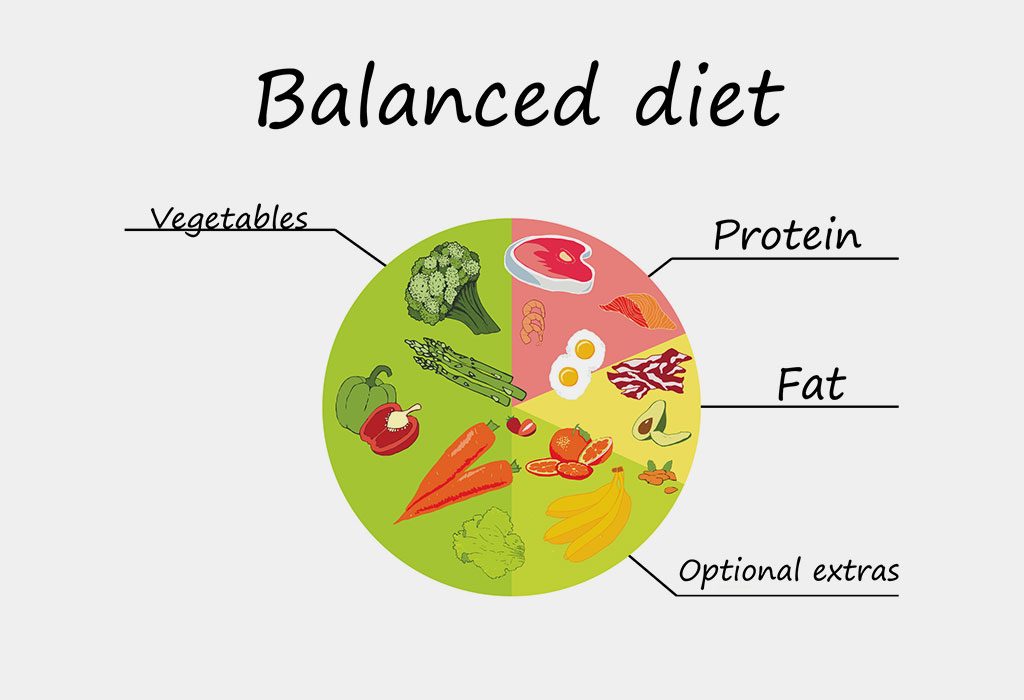
3. The absence of Fats and Oils
The food pyramid includes fats and oils as these are also important components of our body. However, MyPlate does not include fats and oils. It is automatically understood that some of our food items are prepared using oils, and some food items from the basic food groups contain fat. So, fats and oils are not explicitly included in the plate.
4. The absence of Food Servings
The food pyramid indicates the number of servings from each food category that one must include in a meal. However, MyPlate does not indicate the number of servings. It just emphasizes the quantity of each food group. It indicates how to balance the food that you take.
Although there are various guidelines to help you understand the nutrients that you need to have a balanced meal, ensure that you enjoy your meal, drink plenty of water and avoid overeating.









